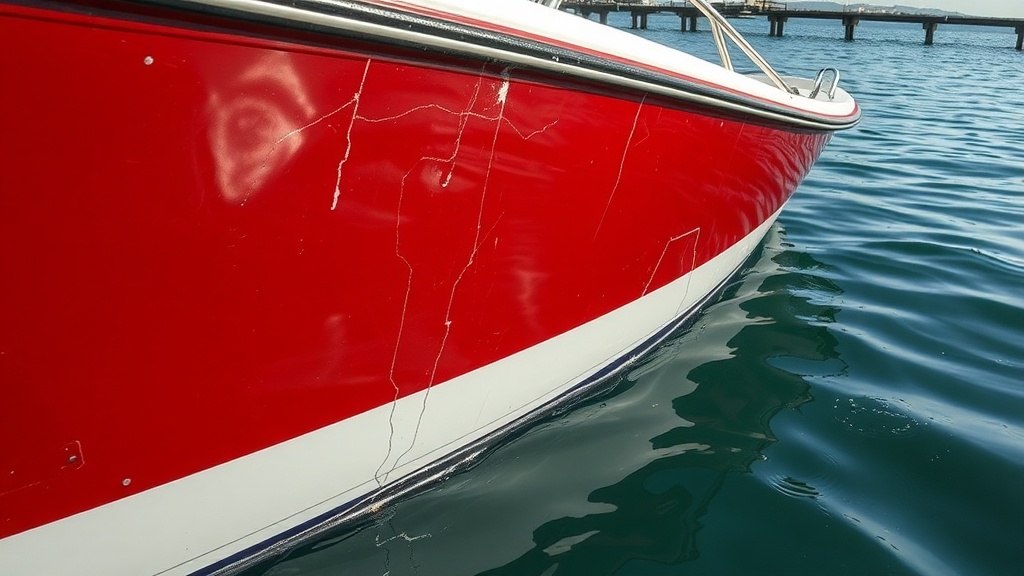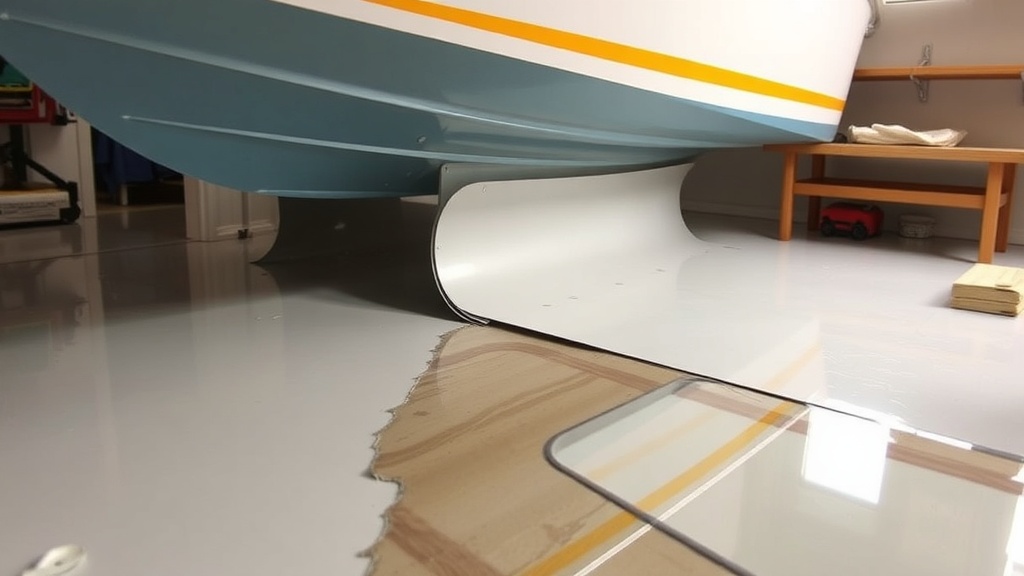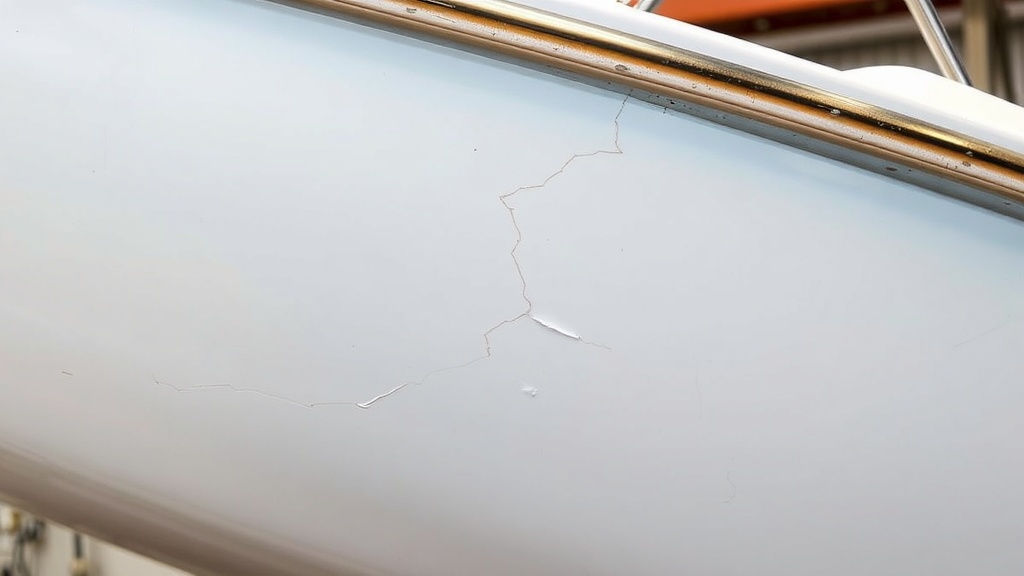Effective Techniques for Repairing Fiberglass Cracks on Boats
Repairing fiberglass cracks on boats is essential for maintaining the integrity and aesthetics of your vessel. Cracks not only compromise the structure of your boat but can also lead to more severe damage if left unaddressed. Fortunately, with the right techniques and a bit of patience, you can carry out effective repairs on your own. Here’s a step-by-step guide to help you get started.
Assessing the Damage
Before diving into repairs, it’s crucial to assess the extent of the damage. Small surface cracks may only require a light touch, while larger cracks could mean deeper issues.
- Surface Cracks: These are usually cosmetic and can be fixed easily.
- Deeper Cracks: If you notice cracks that penetrate through the fiberglass, further analysis is necessary to ensure the structure isn’t compromised.
- Delamination: This occurs when the fiberglass layers separate, which can be a sign of more serious problems.
Gathering Your Materials
Once you’ve assessed the damage, gather the necessary materials to make your repairs. Here’s a list of what you’ll need:
- Fiberglass repair kit (includes resin and hardener)
- Acetone for cleaning
- Sandpaper (80, 120, and 220 grit)
- Fiberglass cloth or matting
- Masking tape
- Putty knife or spreader
- Paint or gel coat for finishing touches
Preparing the Area
Proper preparation is key to a successful repair.
- Clean the Area: Use acetone to clean the cracked surface. Make sure to remove all dirt, oil, and old paint.
- Mask Your Surroundings: Use masking tape to protect areas around the crack. This will allow for clean edges when applying your repair materials.
- Sand the Surface: Rough up the area around the crack using 80-grit sandpaper to ensure good adhesion for the fiberglass repair materials.
Applying the Fiberglass Repair
Now that you’ve prepared the area, it’s time to apply the fiberglass repair materials.
- Mix the Resin: Follow the instructions on your fiberglass repair kit to mix the resin and hardener. Be sure to mix it thoroughly for the best results.
- Apply a Base Layer: Using a putty knife, apply the mixed resin into the crack, ensuring that it fills completely. Press fiberglass cloth or matting into the resin to reinforce the repair.
- Build Up Layers: Add additional layers of resin and fiberglass cloth as needed to build up a solid repair. Allow each layer to cure as instructed before applying the next.
Finishing Touches
After the final layer has cured, it’s time to finish your repair. Here’s how:
- Sand Smooth: Use 220-grit sandpaper to smooth out the surface of the repair until it’s even with the surrounding area.
- Apply Gel Coat or Paint: For aesthetics and added protection, apply a gel coat or high-quality marine paint over the repair.
Final Inspection
Once everything is dry, inspect the area carefully. Ensure there are no air bubbles and that the repair sits flush with the surface. If the repair is solid and visually appealing, you’ve successfully repaired the fiberglass cracks on your boat!
Maintaining your boat is an ongoing process, and addressing issues such as fiberglass cracks promptly will help prolong its life and ensure safe outings on the water. Keeping your skills sharp and staying proactive about repairs can save you time and money in the long run. Enjoy the sense of satisfaction that comes with being hands-on with your boat maintenance and happy sailing!
Preventative Measures to Avoid Fiberglass Damage on Marine Vessels
Maintaining the integrity of your boat’s fiberglass is crucial not only for aesthetic appeal but also for safety and performance on the water. Prevention is always better than repair. Here are some effective strategies to protect your marine vessel from fiberglass damage.
Regular Inspections
Make it a habit to routinely inspect your boat’s fiberglass. Look out for small cracks, blisters, or discoloration. Early detection is key; catching problems before they escalate can save time and money in repairs. Conduct inspections in the following areas:
- Hull and deck surface
- Transom and keels
- Areas around fittings and hardware
- Inside the boat, especially where moisture may accumulate
Proper Cleaning
A clean boat is a healthy boat. Use a mild soap and water solution to clean the fiberglass surfaces regularly. Avoid harsh chemicals that can erode the gel coat. After washing, apply a wax specifically designed for fiberglass. This will create a protective layer.
Protect Against UV Damage
Sun exposure can cause significant damage to your boat’s fiberglass over time. Here’s how you can protect your vessel:
- Use a high-quality UV-resistant cover when storing your boat.
- When docked, consider using a bimini top or other sunshade solutions.
- Regularly apply a UV protectant to your boat’s surface.
Proper Storage Techniques
Storage plays a vital role in preserving your fiberglass structure. Follow these practices to enhance durability:
- Store your boat in a shaded area or use a cover during off-seasons.
- Avoid storing your boat on rough surfaces that can scratch the hull.
- Consider using stands or pads to evenly distribute weight on the hull.
Be Cautious with Docking
Docking your boat can often lead to scratches or dents if not done carefully. Here are tips to minimize impact damage:
- Approach the dock slowly to reduce potential collisions.
- Use fenders at the locations where your boat will make contact with the dock.
- Ensure all crew members are aware of their responsibilities during docking to avoid accidents.
Mind the Weather
Extreme weather conditions can adversely affect your boat’s fiberglass. Regularly check the weather forecast, and take adequate measures, such as:
- Securing your boat properly before storms.
- Using tarps to shield your boat from heavy rainfall or snowfall.
- Removing any canvas or soft tops to reduce wind resistance.
Check Your Hardware
Every component attached to your boat, from the waterline to the cleats, can impact fiberglass integrity. Follow these steps to maintain your hardware:
- Regularly inspect screws and fittings for rust or wear.
- Tighten loose hardware since this prevents unnecessary stress on the fiberglass.
- Replace any damaged parts promptly to avoid water infiltration.
Use Quality Products
Investing in high-quality cleaning and maintenance products is essential. Whether it’s wax, polish, or protective coats, choose products that are specifically formulated for fiberglass. Doing so ensures you’re using the right ingredients that won’t compromise the integrity of your boat.
By following these preventative measures, you can greatly reduce the risk of fiberglass damage. Taking the time to care for your boat not only enhances its life but also ensures a safer and more enjoyable experience on the water. Remember, a well-maintained boat is your best ally in enjoying countless adventures out at sea.
Conclusion
Repairing fiberglass cracks on boats is not just about fixing a problem; it’s about investing in the longevity of your vessel. By employing effective techniques tailored specifically for fiberglass, you can restore strength and aesthetic appeal to your boat. Utilizing quality repair kits, properly preparing the surface, and using the right application methods ensures that your repairs are durable and inconspicuous.
However, taking proactive steps is equally important. Preventative measures, such as regular inspections and maintenance, can significantly reduce the likelihood of cracks. By keeping your boat stored correctly, using protective coatings, and avoiding collisions, you can save yourself time, effort, and money in the long run.
Remember, fiberglass is resilient but requires care and attention. Maintaining your vessel not only enhances its performance on the water but also contributes to your safety and enjoyment. By integrating these repair techniques and preventative strategies into your boat care routine, you can enjoy many more voyages without the worry of unexpected damage. Embrace these practices, and your boat will thank you with every wave you ride. Stay vigilant, take pride in your craft, and make your boating experience smooth and enjoyable.




